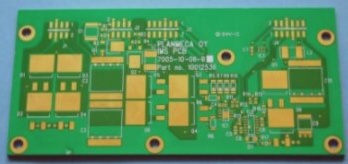1. The names of circuit boards include: ceramic circuit board, alumina ceramic circuit board, aluminum nitride ceramic circuit board, PCB board, aluminum substrate, high-frequency board, thick copper board, and impedance board PCB.
2. Ultra-thin circuit board printing (copper etching technology), circuit boards, etc. The circuit board plays a crucial role in the mass production of fixed circuits and the optimization of electrical appliance layouts.
3. The circuit board is also known as a printed circuit board, commonly abbreviated as PCB (Printed Circuit Board).
4. It is an excellent, scratch-resistant printed circuit board with characteristics such as high wiring density, lightweight, thin profile, and good flexibility.
5. Rigid-flex boards (Reeechas) represent the evolution of FPC and PCB technologies, leading to innovative products that combine soft and hard board features.
6. Therefore, the rigid-flex board integrates flexible circuit board attributes with rigid circuit board functionalities according to specific process requirements.
7. Circuit boards are categorized based on their number of layers into three types: single-sided, double-sided, and multilayer circuit boards.
8. First, the single-sided board is focused on one side, making it the most basic PCB configuration. Since the wiring is present only on one side, it is referred to as a single-sided circuit board.
9. Single-sided boards are typically simple and cost-effective, but their limitation lies in the inability to accommodate overly complex products.

1. The double-sided board is an extension of the single-sided board. When single-layer circuits cannot meet the requirements of electronic products, double-sided panels must be utilized. Both sides are covered with copper traces, allowing connections to be made through vias to form the necessary network connections.
2. A multi-layer board consists of three or more conductive pattern layers, separated by insulating material, with the conductive patterns interconnected. Multilayer circuit boards represent the advancement of electronic information technology toward high-speed, multifunctional, high-capacity, compact, thin, and lightweight designs.
3. Circuit boards can be categorized into flexible boards (FPC), rigid boards (PCB), and rigid-flex boards (FPCB) based on their characteristics.
4. The two sides of a PCB are referred to as the top and bottom. This constitutes a double-layer circuit board. A double-layer circuit board features double-sided copper plating, with copper and traces on both sides, and allows for interlayer connections via holes.
5. Begin by preparing the circuit schematics.
6. Create a new PCB file and package it into the component library.
7. Plan the circuit board layout.
8. Ensure that the netlist and components are included.
9. Automatically lay out the components.
10. Adjust the layout as needed.
11. Conduct network density analysis.
12. Set up wiring rules.
13. Perform automatic routing.
14. Manually adjust the traces.
15. Commonly used EDA circuit software can be employed to design multilayer PCB circuit boards. Although the methods may vary, the underlying principles remain the same.
16. PCB design software, such as Altium Designer (AD), provides ten different design rules. These rules cover aspects such as trace placement, component placement, routing guidelines, component movement, and signal integrity. Following these rules, Protel DXP can automate layout and routing, which significantly affects the success and quality of the design, depending on the rationale behind the design rules and the user’s experience.
17. For specific circuits, different design rules may be applied. When designing a double-sided board, the system’s default settings can be utilized.
18. Here, I will share the steps for setting up a four-layer PCB. The setup for eight-layer boards and other multilayer boards follows a similar process. Other versions of Altium Designer operate in a similar manner.
19. First, if you have your own project, you can create a new PCB file within it.
20. Select File > New > PCB.
21. As you can see, the newly created PCB currently has only two layers: TopLayer and BottomLayer, as shown below.
22. Open layer management to access the cascade management interface.
23. Currently, there are only two layers: TopLayer and BottomLayer. On the right, you will find an option to modify the settings. After adjustments, we can see that the four-layer PCB has been configured to include GND and VCC layers. By importing the compiled schematic, we can draw the PCB layout for the four-layer board.
24. The operational skills for each layer are the same as for the single-sided board, requiring thorough consideration during the design process.
25. First, if you have your own project, you can create a new PCB file in your project.
26. Select File > New > PCB.
27. As mentioned, the newly created PCB has only two layers: TopLayer and BottomLayer, as depicted below.
28. Open layer management to access the cascade management interface.
29. Currently, only TopLayer and BottomLayer are visible. On the right, you will find an option to modify settings. After making adjustments, we can observe that the four-layer PCB has been configured to add GND and VCC layers. By importing the compiled schematic, we can draw the PCB layout for the four-layer board.
—
I hope this helps improve the clarity and flow of your article!




